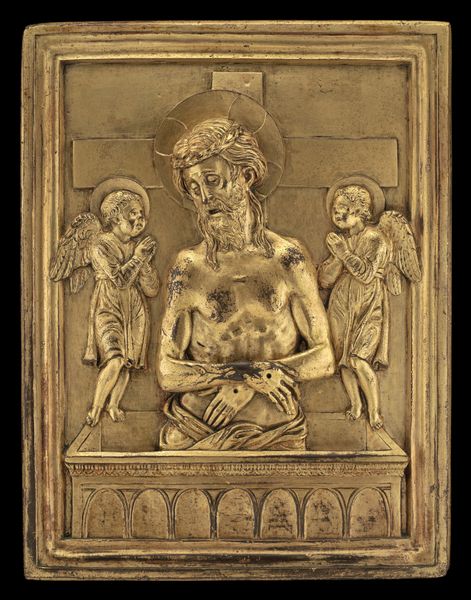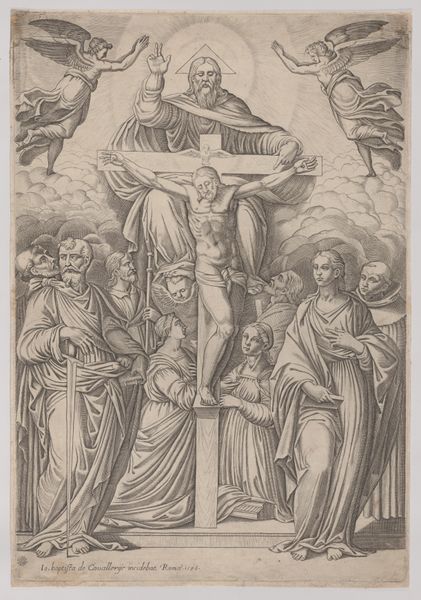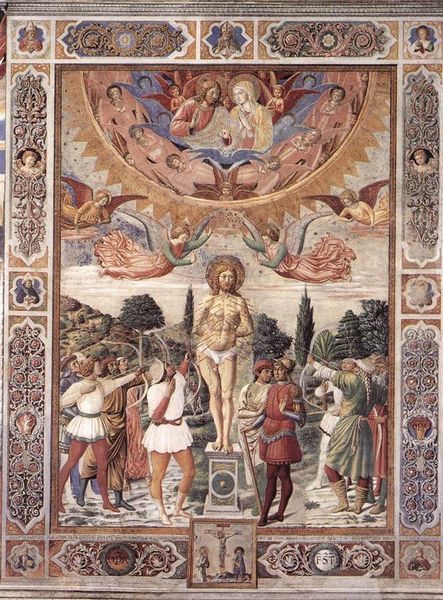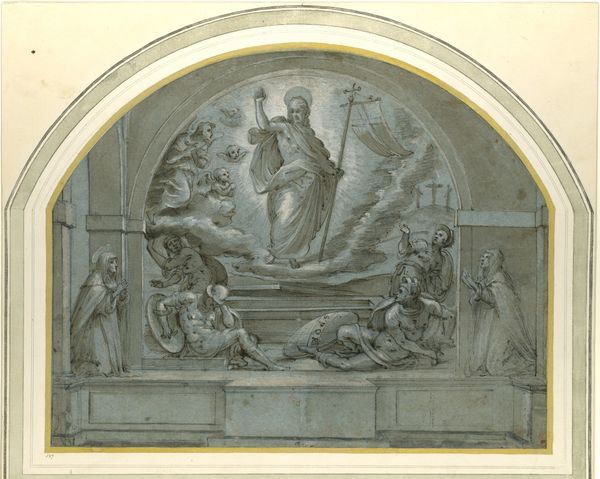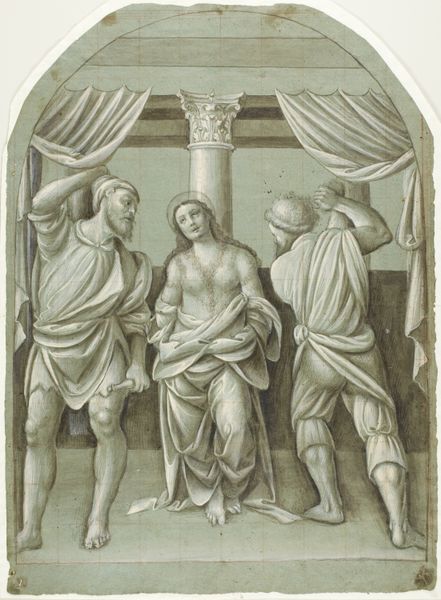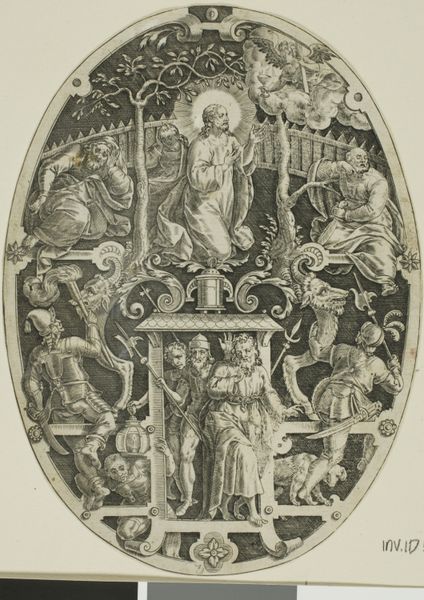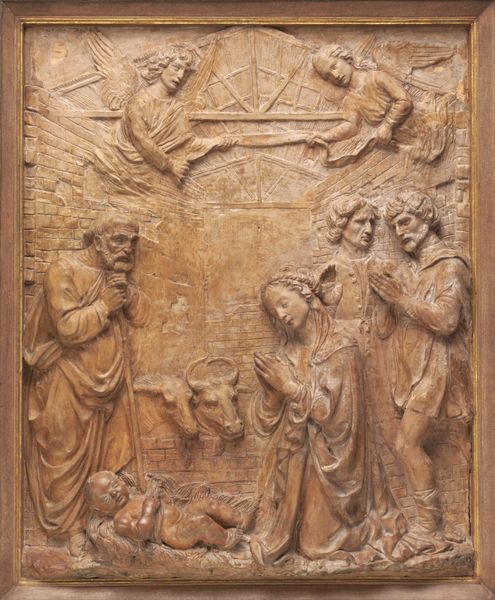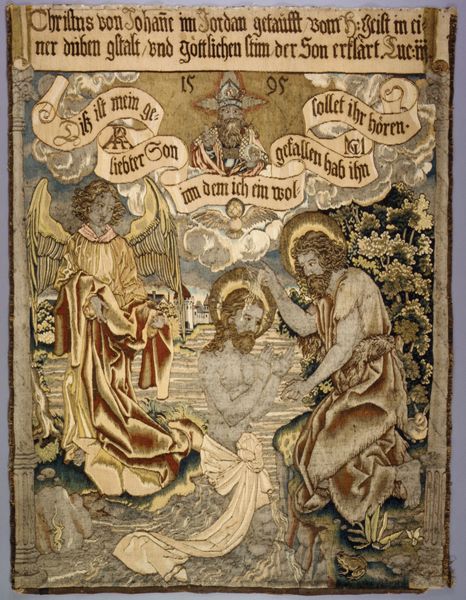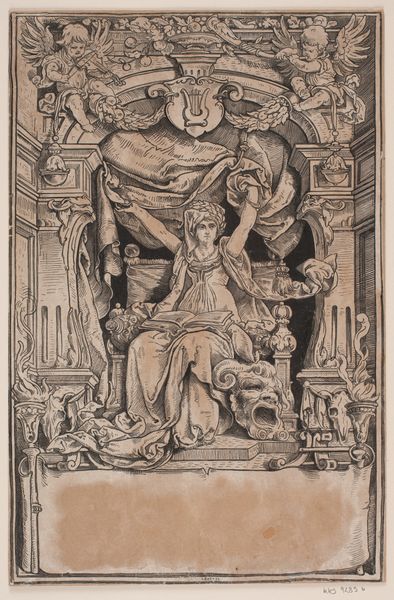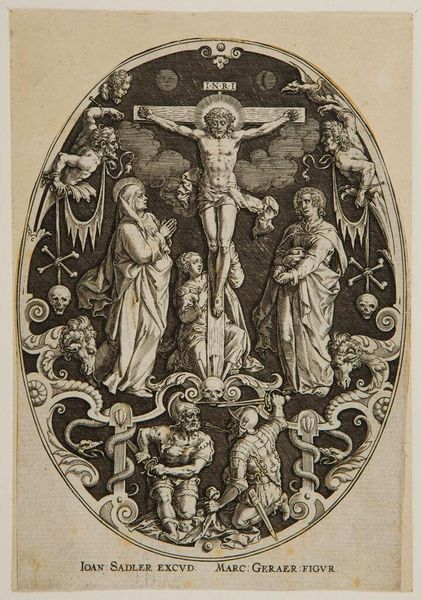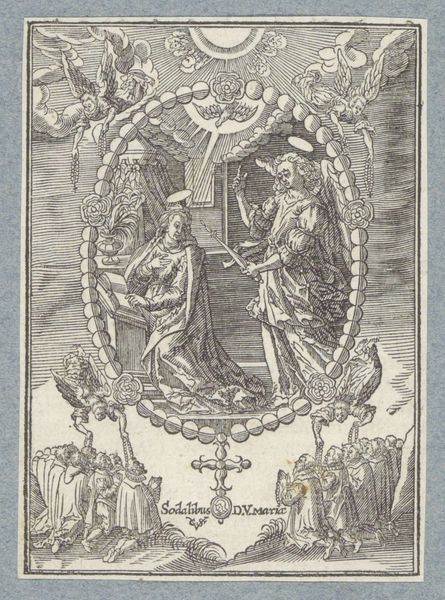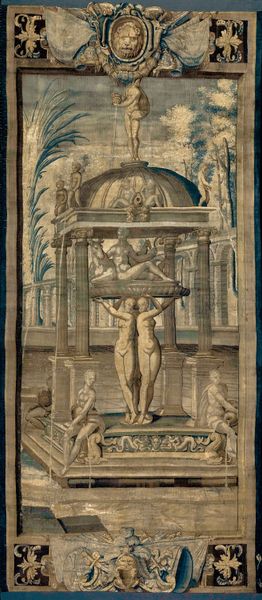
Tegeltableau met de personificaties van het Schone, het Ware en het Goede 1893
0:00
0:00
mixed-media, painting, ceramic, mural
#
portrait
#
mixed-media
#
art-nouveau
#
allegory
#
painting
#
sculpture
#
ceramic
#
figuration
#
tile art
#
carved
#
symbolism
#
mural
#
statue
Dimensions: height 197.5 cm, width 174.5 cm, depth 8.0 cm, height 186.0 cm, width 156.5 cm
Copyright: Rijks Museum: Open Domain
This tile tableau, depicting personifications of the Beautiful, the True and the Good, was made by the N.V. Haagsche Plateelfabriek Rozenburg in the Netherlands. Although undated, the work clearly belongs to the Dutch art nouveau period, roughly 1880 to 1914. It’s interesting to consider what these figures represented at the time. The figures are neoclassical, which shows the influence of academic art training, but it also invokes much earlier traditions of representing abstract concepts through the human form. The text on the scroll they hold translates as, "In us is all the goodness of life." Who decides what is good or beautiful? In the late 19th century, social values were increasingly contested. Industrialized nations were seeing a rise in socialist and communist movements. What would they have thought of this somewhat conservative vision of beauty and truth? As art historians, we might compare this to other contemporary works, or look into the history of the Rozenburg factory. By considering the social and institutional contexts, we can start to unpack the complex meanings embedded within.
Comments
No comments
Be the first to comment and join the conversation on the ultimate creative platform.
